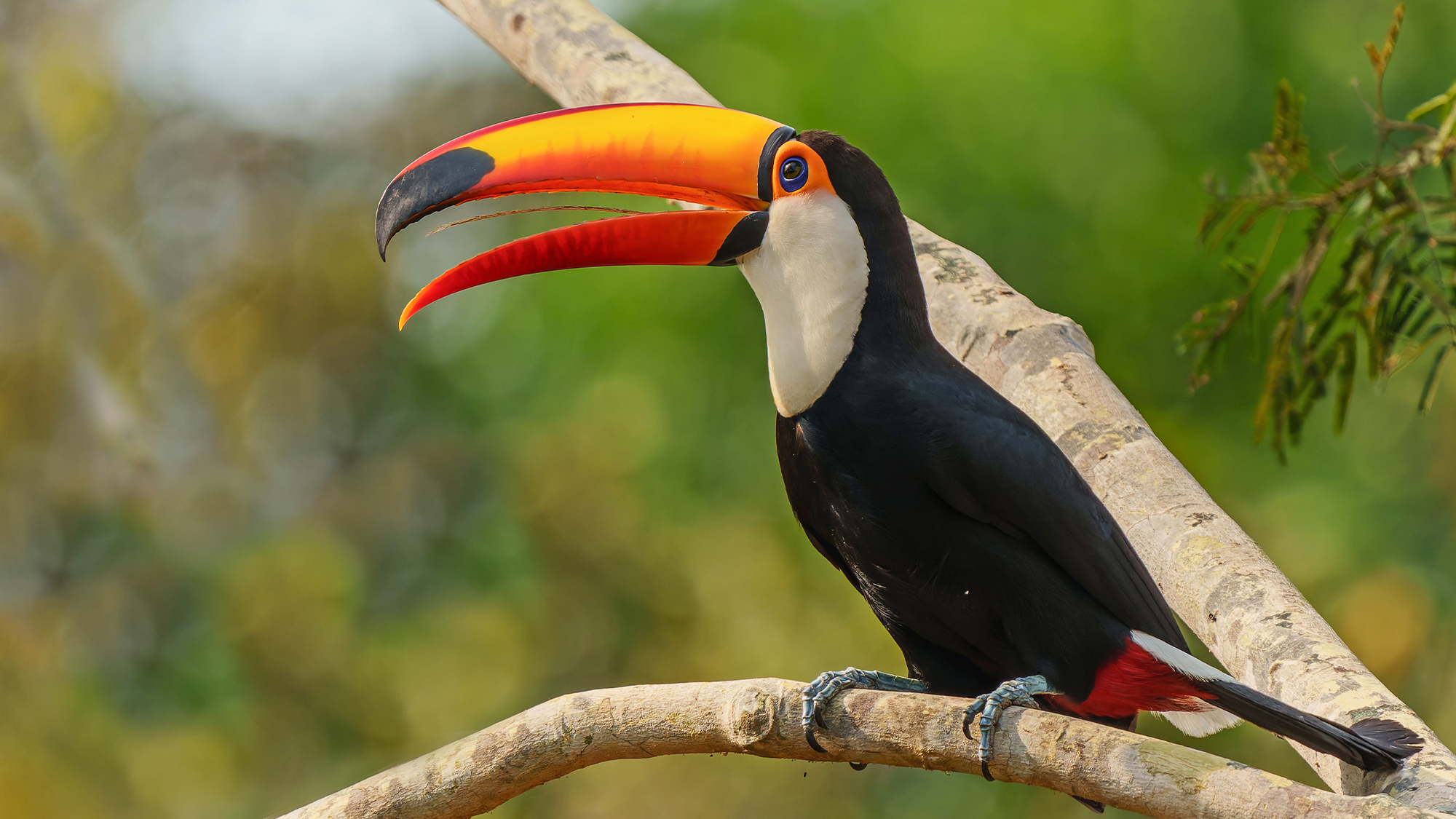Birds that feed on tropical fruits are much more than just a treat for the eyes. These wildly colored birds are also a vital part of rainforest regeneration. Data collected on the ground in Brazil’s Atlantic Forest show that if birds such as the red-legged honeybird, palm tanager and toco toucan could move more freely, carbon storage could increase by up to 38 percent. The findings are detailed in a study published April 15 in the journal Nature Climate Change.
A decisive but fragmented landscape
The Atlantic Forest in Brazil is one of the most biologically diverse regions in the world. It is home to nearly seven percent of the world’s plant species and five percent of all vertebrates. This region is also one of the most fragmented rainforests on Earth, due to deforestation, agriculture and other human activities. An estimated 88 percent of its vegetation has been lost in the past 500 years, with only 12 percent of the original forest remaining in a mosaic of micro-forests. Many of these widely scattered forests are too far apart to support bird movement.
Wild birds that feed on a variety of fruits – or frugivores – can play a vital role in forest ecosystems by eating, excreting and dispersing seeds as they move. Between 70 and 90 percent of tree species living in tropical forests depend on seed dispersal by animals as it allows forests to grow and function.
To combat this, 12 million hectares of land have been earmarked for restoration and natural regeneration under the Atlantic Forest Restoration Pact. New data from this study are helpful in determining how to proceed.
[Related: Three nations pledge to reverse decades of destruction in the rainforest.]
“This important information allows us to determine active restoration efforts – such as tree planting – in landscapes that are below this forest cover threshold, where assisted restoration is most urgent and effective,” Daisy Dent, study co-author and naturalist at ETH Zurich, a public research university in Switzerland, said in a statement.
Bigger birds, bigger seeds
In the study, the team compared the carbon storage potential that can be restored in landscapes with limited forest fragmentation to more fragmented landscapes. They found that more fragmented landscapes restricted the bird’s movement and required more tree cover.
According to the team, a minimum of 40 percent forest cover is critical in the Atlantic Forest region for species diversity and also maintains and restores the ecosystem services needed to maximize forest restoration efforts. These ecosystem services include carbon storage and seed dispersal.
Different bird species also have different impacts on seed dispersal.
Smaller birds can spread more seeds around, but they can only carry the smaller seeds, which have a lower carbon storage potential.
Larger and larger birds such as the Toco Toucan or Curly Jay can disperse the seeds of larger trees with higher carbon storage potential. However, larger birds are less likely to move through more highly fragmented landscapes.
“Allowing larger frugivores to move freely in forest landscapes is crucial for the healthy recovery of rainforests,” study co-author and ETH Zurich ecologist and biologist Carolina Bello said in a statement. “This study shows that particularly in tropical ecosystems, bird-mediated seed dispersal plays a major role in determining which species can regenerate.”
What can be done
Preventing the poaching of tropical birds is one strategy, as more birds flying around can turn into more trees.
“We’ve always known that birds are essential, but it’s remarkable to find the scale of these effects,” study co-author and ETH Zurich ecologist Thomas Crowther said in a statement. “If we can restore the complexity of life in these forests, their carbon storage potential will be greatly increased.”
[Related: Songbirds near the equator really are hotter, color-wise.]
Previous studies have shown that restoring these forests could sequester more than 2.3 billion tons of carbon. Natural regeneration can also be more cost-effective than planting more trees, but both should be done. This improves animal movement in areas where more passive recovery is more likely. In highly fragmented landscapes, active restoration such as planting more trees is needed. For these tree planting methods to be ecologically efficient, it is important to ensure that the trees actually belong to the area and are not planted in pastures.
[Related: When planting trees is bad for the planet]
“By identifying forest cover thresholds in the surrounding landscape that allow seed dispersal, we can identify areas where natural regeneration is possible, as well as areas where we need to actively plant trees, allowing us to maximize the cost-effectiveness of restoring forests,” study co-author and Nature-Based Solutions project leader Daniel Ramos said in a statement. Ramos is affiliated with the University of Exeter in the United Kingdom and the Universidade Estadual Paulista in Rio Claro, Sao Paulo, Brazil.

